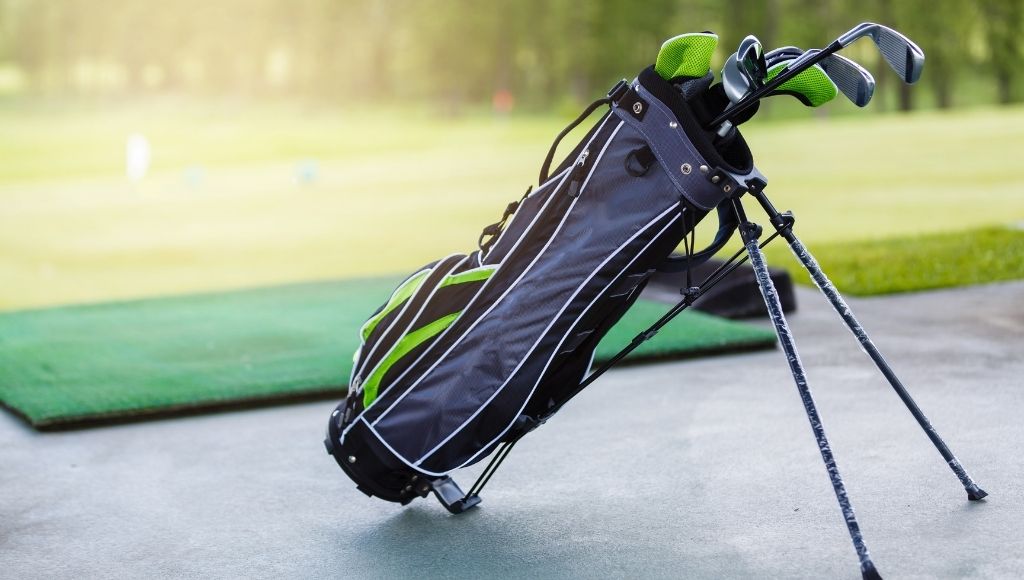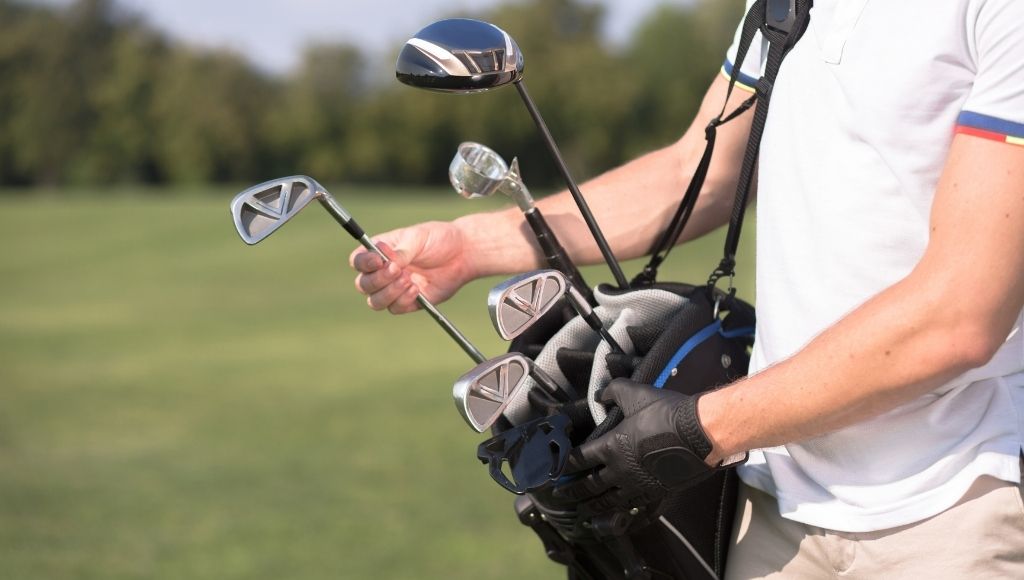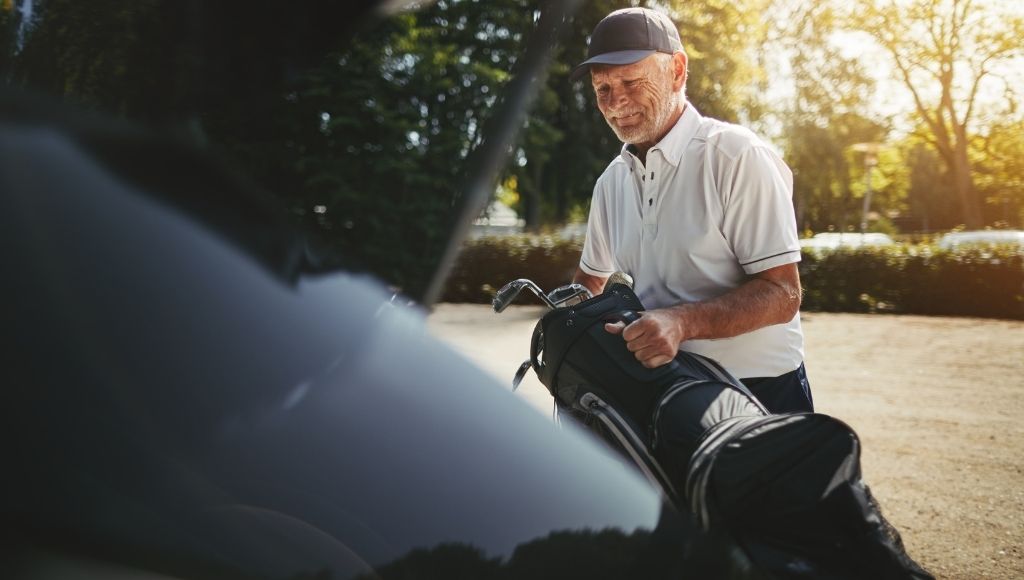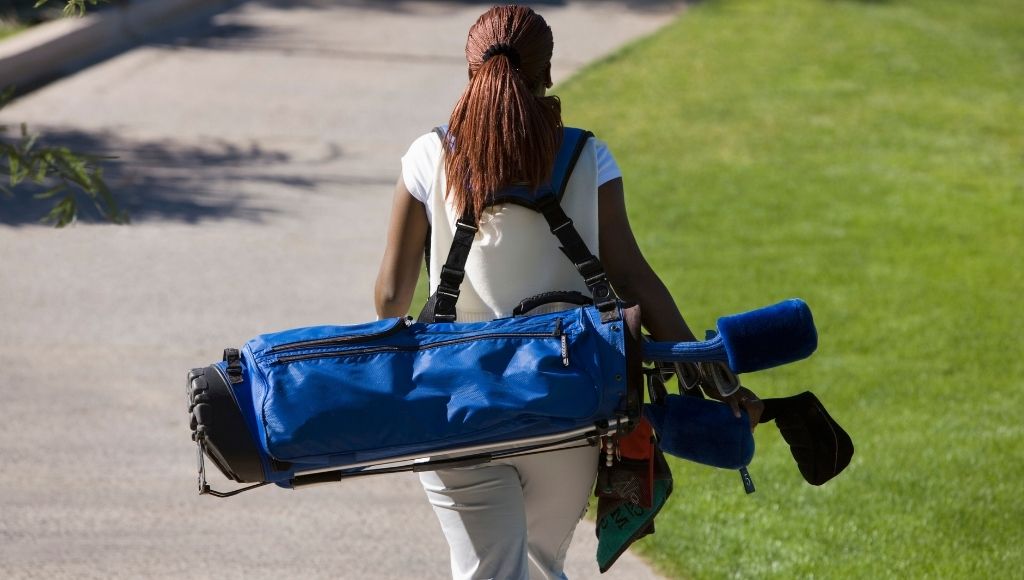We all love to travel. Whether it be for a vacation or just because we want to explore new places, traveling is one of life’s great pleasures. However, when you’re packing up your golf clubs and heading out on the road with them in tow, things can get complicated.
So, with the help of the team at Club and Tee, I’ve put together this handy guide that will help ensure you don’t forget anything important before hitting the highway so you can enjoy your trip without worrying about how to pack those pesky golf clubs!
First, ask yourself, do you HAVE to take your golf clubs traveling?

I know it is always better to play golf with your own set, from the way the golf club sits in your hand to the satisfying ping as you grip and rip 300 yards up the fairway; comfort is good. But, there may be times that it could be best to leave yours at home and hire a set at your destination.
Why? Well, there’s no sense in trying to lug around heavy golf clubs on a trip where you know they’re not going to be used.
If you’re on an annual vacation or business golf trip that happens every year and you always use your own clubs, take them! However, if the trip is like a weekend getaway for the family and you’ll only hit the greens once, you may find that renting clubs at your destination is a better choice.
Call ahead to check if your vacation destination has a pro shop and rental set of clubs. And, be sure to ask if they offer the option to rent clubs and their quality. If you’re happy to do that, it can save a lot of hassle with luggage and fees.
But, if you must travel with your golf clubs no matter what, here are some things to keep in mind when packing and transporting them.
How to travel with golf clubs

1. Know the fees upfront – do your research
It is imperative to know in advance what it will cost to be traveling with your golf clubs on an airplane. Some people purchase a bag that is made especially for carrying golf clubs when they fly, others just wrap them up securely and box them. But, the fees that you pay may be different depending on what you do.
Most airlines will charge a fee for extra checked bags or sporting equipment. For example, the sporting equipment for Southwest Airlines is an additional $75.
If you’re thinking about getting around the fee by having your golf clubs as your checked-in bag, then there may still be an oversized or overweight bag. Again, highlighting southwest (as I happen to have their web page open still) is $75.
With Delta, however, it seems you can use your $30 checked luggage for golf clubs, but they must be packaged within a hard-shell case, and there is a weight limit.
As you can see, it gets a little complicated. I’m not going to go through every airline under the sun and list the policies and bag fees, but it is worth doing your research first. Here are a few helpful links to tee you off, but remember, it changes from airline to airline.
2. Try to book a Nonstop Flight
If your gear is going with you, try to book a nonstop flight so you can get there faster and easier. Nonstop flights are more convenient and less likely to result in damaged clubs thanks to over-aggressive baggage handlers. It is usually worth paying the extra few bucks by booking a direct flight.
3. Have a good quality golf travel bag for your clubs
Your travel bag must be of good quality as the last thing you want to be doing is putting your precious golf clubs in anything flimsy or cheap.
You also want to make sure that the travel bag you have is big enough to hold all your accessories such as tees, gloves, golf balls, etc. Here are a few things to look out for in a great bag for traveling with golf clubs:
- Make sure that your bag is made of quality materials and is a durable travel bag.
- The bag is big enough to hold all of your accessories when traveling with golf clubs such as tees and golf balls.
- Invest in a high-quality travel bag that has multiple pockets for organization.
- Consider where you will store your golf clubs in between rounds when traveling.
- Find a travel case with separate sections; this way, you can see what you need without digging through everything.
- It should be lightweight and easy to carry around.
- The individual compartments should be spacious enough to hold your accessories according to their size and even golf shoes.
- Ensure when you get your bag to use an element of personalization. You don’t want anyone else accidentally taking your precious clubs from baggage claim.
Can I take golf clubs as a carry-on?
No. The TSA prohibits golf clubs as carry on items as they can be used as weapons. You can find more details about this and other specific items on their website.
Soft vs. hard golf travel bags
Hard-shelled bags
Hard-shelled golf travel bags are the safest option. These bags often have wheels for easy mobility, but they tend to be a bit bulky, as they can’t fold down or compress.
Some good points of hard-shelled golf travel bags are their durability and lack of breakability. In addition, they will keep your golf clubs safer when in the hands of airline luggage handlers. Hard-shelled golf bags can also handle more weight than their soft counterparts.
However, the extra weight can make it harder to move around, and you also need to be aware that these types of bags are often quite large, so there is a greater chance of excess baggage fees from the airlines.
Finally, these bags also tend to be more expensive than the soft varieties.
Soft bags
Soft golf travel bags can also be used, but they are not as durable as hard-shelled golf bags and aren’t often suitable for long journeys or heavy loads. However, one advantage they have over their rigid counterparts is their ability to compress when empty, which means they take up less room in your garage when you are not traveling.
Which is the best?
The best golf bags are the ones that meet your specific needs, but when it comes to travel suitcases, hard-shelled varieties usually offer more protection and durability.
A soft golf bag can leave your clubs more prone to damage and wear than hard-shelled versions. If you are planning on traveling long distances or carrying a lot of gear with your golf clubs, it is probably best to opt for a hard shell.
Soft cases are an ideal choice if you want something easy to store in your garage when not being used. They may not protect your clubs and their hard counterparts, but they take up less room due to their ability to compress when empty, making them easier to transport in the first place.
4. Don’t pack valuable items for check-in
Expensive items such as a GPS rangefinder or portable launch monitor should always be packed in your carry-on bag. You never know if you will get delayed by weather or other problems that can often occur when traveling by air and want to ensure that you have all of your essential items, so it is always best to hold onto those things with you.
5. Think about your balls
If you’re like me, you probably have a pretty large stash of golf balls in your golf bag at all times. However, when traveling, this additional weight can quickly add up. So try to limit how many you take. Of course, you can always buy some more at your destination if needed and even pick up a few logo balls as a nice souvenir.
6. Pack smart
If you are paying additional money for a checked bag, what else can you get in there? For example, if you can pack your clothes and a few other essentials in your golf bag, you can maybe leave an additional checked bag at home.
7. Be sure to consider insurance
If you have travel insurance, be sure to check the fine print to see what is covered. Often sporting goods won’t be covered. Also, even if you have specific golf travel insurance, sometimes it will only cover the clubs if they are inside a hard shell golf travel bag. So pay attention.
How to pack golf clubs for travel

When traveling with golf clubs, you can do a few things to transport them as safely and conveniently as possible. We’ve put together a few tips below that will help you get the most out of your trip.
Use clothes and accessories to protect your clubs
Try using shirts, rain gear, or other clothing accessories to pad around the club heads — it works well in all sizes of travel bags and will help prevent damage due to sharp edges colliding with each other.
The Stiff Arm is an absolute MUST if you have a soft bag
If you haven’t heard of the Stiff Arm, it’s a support system that ensures your golf bag resists intense collision and impact force to protect the clubs inside.
They will usually cost around $30. Most will be fully adjustable up to 52 inches and light in weight.
Place the pole inside your golf bag, so the aluminum pole and molded dome absorb any sudden impact on the bag’s top or bottom during transit.
If you are traveling with a soft case, the Stiff Arm is a game-changer.
Remove the club heads
If possible, it is a good idea to remove the club heads. It is usually the part of a golf club that is most delicate and can get damaged and pick up dents easily.
Have you considered shipping your golf clubs instead?

Many people decide to ship their golf clubs instead of traveling with them. The reasons for doing so are numerous, but the biggest one is that you can save money on baggage fees when you travel with your golf bag.
Another benefit is that they will be there before you arrive, and if you’re going international, this service may be required for travel through customs. In addition, shipping clubs usually take less than 24 hours and require minimal effort from you since these companies handle everything for you, including packaging, delivery, and customs.
While you might think it’s a hassle to ship your golf clubs, the process is quite simple once you have all of the materials and information needed.
How to Ship Golf Clubs
One of the most convenient methods is to do it yourself if you’re not in a rush or have time before your trip begins.
There are several different options when shipping golf clubs; however, one of the most common methods that don’t require any additional equipment other than a sturdy sports bag is using FedEx or UPS.
The first step is purchasing an airline-approved bag for shipping or a large enough box, which can hold your clubs and plenty of padding to protect your clubs while in transit.
The next thing to do is choose an air freight company, make sure they accept club shipments, and get started. You’ll need to create or log into your account, where they will need to know your clubs’ measurements, weight, and any other special requests for the trip.
Next, package them up, then drop them at a FedEx or UPS location to be shipped out based on their availability. If you are shipping, it would be worth removing your clubhead and individually wrapping them in bubble wrap or something similar to prevent them from knocking into each other during transit.
Specialist companies
As well as UPS and FedEx, the shipping world is a competitive space, so I’d certainly recommend looking at a specialist company; some examples are Ship Sticks, Lugless, or My Baggage.
While you’ll still be responsible for packing them yourself, their step-by-step guides ensure it will be a simple process.
Once you have packed your club, you can attach shipping labels, let them know an excellent time to pick them up, and they will take care of the rest.
Ship Sticks have a couple of really useful videos on how to pack you clubs for boat a soft case:
And a hard case:
How much does it cost to send golf clubs?
A few factors would determine this, mainly how long it will take and how much insurance you need. You can usually find ground shipping for around $75. If you need one or 2-day shipping, you can expect to pay more than $150. It would undoubtedly be worth shopping around to get some quotes.
Final Thoughts
Traveling with golf clubs can be a bit of a headache, but it needn’t be. As you can see, with just a little preparation and the correct information, you can make traveling with your clubs feel like a breeze.
I hope the above tips have been helpful and given you some new ideas for the next time you travel with your golf clubs.
Good luck, and happy travels!


